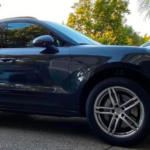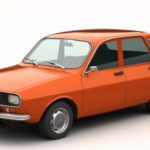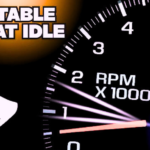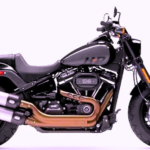Yamaha RX 100
The Yamaha RX 100 holds an enduring legacy, cherished by motorcycle enthusiasts globally. Launched in 1985, this two-stroke motorcycle quickly became a favorite, known for its impressive power, light weight, and remarkable performance.
For over a decade, it set the benchmark for bikes in India and is still remembered fondly as one of the most iconic motorcycles.
In this post, we’ll take an in-depth look at the history, technical specifications, design, performance, and lasting impact of the Yamaha RX 100, showcasing why it still holds a legendary status in the motorcycling community.
1. The Rise of Yamaha RX 100
The Birth of the RX 100
- The Yamaha RX 100 made its debut in 1985, making a huge impact on the Indian motorcycle scene.
- Built as a two-stroke motorcycle, it was crafted to offer a perfect blend of affordability and high performance.
Manufactured by Yamaha and Escorts
- The RX 100 was produced through a partnership between the Yamaha Motor Company and Escorts Group.
- Yamaha tapped into Escorts’ local knowledge to cater specifically to the needs of Indian riders.
Immediate Success
- With its dynamic engine and sleek design, the RX 100 instantly caught the attention of motorcycle enthusiasts, quickly becoming a youth favorite.
2. Yamaha RX 100 Specifications: An Overview
The RX 100’s engine and overall design contributed to its status as a powerful, agile bike. Here’s a quick look at the key specifications:
| Specification | Details |
|---|---|
| Engine Type | Single-cylinder, two-stroke, air-cooled |
| Engine Displacement | 98 cc |
| Power Output | 11 PS @ 7,500 rpm |
| Torque | 10.39 Nm @ 6,500 rpm |
| Transmission | 4-speed manual |
| Fuel Tank Capacity | 10 liters |
| Brakes | Drum brakes (Front & Rear) |
| Fuel Efficiency | Around 40 km/l |
| Top Speed | 100 km/h |
3. Unique Features of the Yamaha RX 100
- Impressive Engine: With its 98cc engine producing 11 PS, the RX 100 offered an exhilarating ride.
- Fuel Economy: Despite its spirited performance, the RX 100 maintained a decent 40 km/l fuel efficiency, making it practical for daily use.
- Lightweight and Agile: The bike’s light weight ensured great acceleration and easy maneuverability.
- Ease of Maintenance: The two-stroke engine was simple to repair and maintain, reducing the overall cost of ownership.
4. The Design and Style of the Yamaha RX 100
Design Overview
- Sporty Aesthetics: The RX 100 had a dynamic, angular design, complete with a distinct fuel tank that caught the eye.
- Color Options: Available in a variety of attractive colors, such as Peacock Blue, Metallic Black, Maroon, and Cherry Red, it allowed riders to express their personality through their bike.
Electrical System Upgrade
- In 1991, Yamaha upgraded the bike’s electrical system, moving from 6V to a more efficient 12V system, improving the bike’s ignition and overall functionality.
5. Performance and Riding Experience of the Yamaha RX 100
The RX 100 wasn’t just about looks — its performance set it apart from many of its contemporaries.
Performance Features
- Acceleration: The RX 100 could easily achieve 0 to 60 km/h in a matter of seconds, offering a thrilling ride every time.
- Handling: Its lightweight design and well-tuned suspension ensured that riders enjoyed smooth handling, whether navigating through traffic or cruising on highways.
- Top Speed: With a maximum speed of 100 km/h, the RX 100 was one of the fastest bikes of its time.
6. The RX 100’s Influence and Cultural Impact
Appeal Among the Youth
- The RX 100 became a symbol of youth and adventure, attracting the attention of motorcycle lovers and enthusiasts across India.
- It was one of the first bikes to combine power and affordability, offering great performance at a reasonable price.
A Collector’s Dream
- Even though the RX 100 was phased out in 1996, it remains a sought-after collector’s bike.
- The bike is now a symbol of nostalgia, with many enthusiasts restoring it to its original glory.
Impact on India’s Motorcycle Culture
- The RX 100 played a crucial role in the evolution of Indian motorcycles, especially in setting the stage for performance bikes to enter the market.
- It not only influenced motorcycle design but also opened up a whole new world of riding for younger generations.
7. Frequently Asked Questions (FAQs)
Q1: What is the engine capacity of the Yamaha RX 100?
- The Yamaha RX 100 features a 98cc, air-cooled, single-cylinder engine.
Q2: How much power does the Yamaha RX 100 produce?
- The RX 100 generates 11 PS of power at 7,500 rpm.
Q3: What is the top speed of the RX 100?
- The Yamaha RX 100 can reach a top speed of around 100 km/h.
Q4: How fuel-efficient is the Yamaha RX 100?
- Despite its performance, the RX 100 offers around 40 km/l, making it relatively fuel-efficient.
Q5: Why is the Yamaha RX 100 considered a classic motorcycle?
- The RX 100 is regarded as a classic because of its powerful engine, stylish design, and significant cultural impact in India. It’s also a collector’s item for many motorcycle lovers.
Q6: Are spare parts for the Yamaha RX 100 still available?
- While original parts are increasingly rare, aftermarket parts are widely available, and the bike remains a popular choice for restoration.
8. Conclusion
The Yamaha RX 100 is more than just a motorcycle — it is a legend that continues to influence the Indian motorcycling scene. From its iconic design and outstanding performance to its cultural significance, it has left an indelible mark. Whether you’re reminiscing about the past or discovering it for the first time, the RX 100 remains one of the most cherished motorcycles in history.
Today, the Yamaha RX 100 continues to be a symbol of speed, style, and nostalgia for many enthusiasts, and its legacy will undoubtedly live on for generations to come.









